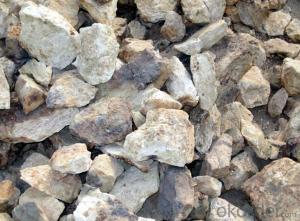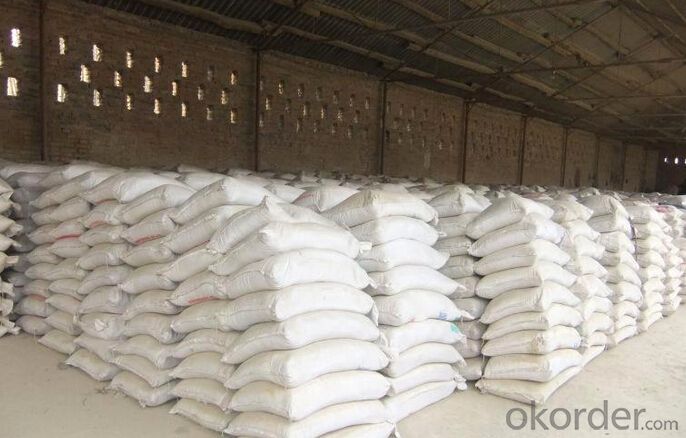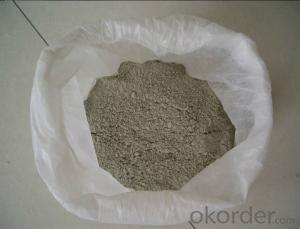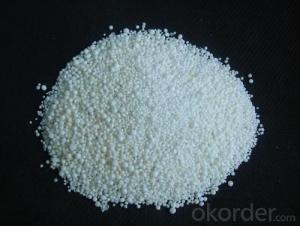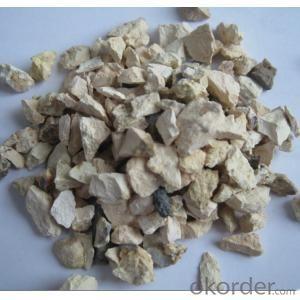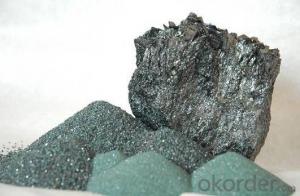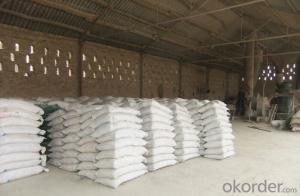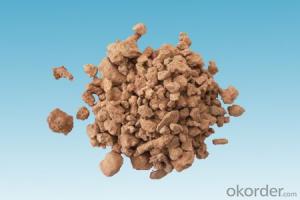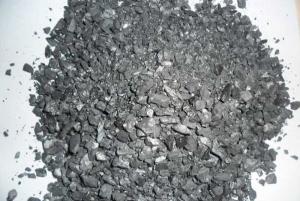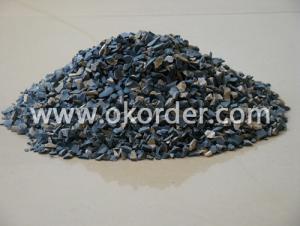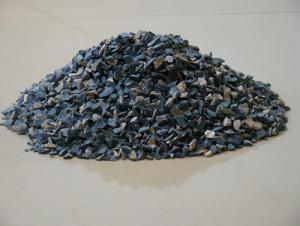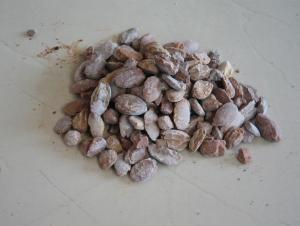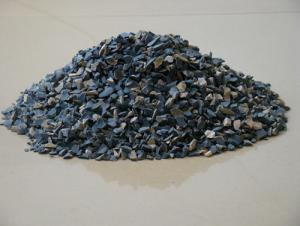Raw Materials for Refractory:Popular in Poland Bauxite of CNBM in China
- Loading Port:
- Tianjin
- Payment Terms:
- TT OR LC
- Min Order Qty:
- 20000 m.t.
- Supply Capability:
- 10000000 m.t./month
OKorder Service Pledge
OKorder Financial Service
You Might Also Like
1.Structure of Calcined Bauxite Description
Bauxite (aluminous soil; Bauxite) is also called the alumina or bauxite, main ingredients are alumina, hydrated alumina containing impurities, is an earthy mineral. White or gray, brown and yellow or light red by iron. From 4 to 3.9 g/cm3 density, hardness, 1 ~ 3 is not transparent, very brittle. Very difficult to melt. Insoluble in water, soluble in sulfuric acid, sodium hydroxide solution. Mainly used for aluminium, refractory material.
2.Main Features of the Calcined Bauxite
Calcined bauxite is one of the principal ore of aluminum. Calcined bauxite contains hydrous aluminum oxides and aluminum
hydroxides, formed through the laterization of aluminous rocks in tropical and subtropical areas .Calcined bauxite is obtained by calcining (heating)superior grade bauxite at high temperature (from 85OC to 1600C) .This removes moisture there. By increasing the alumina content,compared to an alumina content of about 57%to 58% in raw bauxite, calcined bauxite has an alumina content of 84%to88%.The heating is carried out in rotary kilns.
3. Calcined Bauxite Images
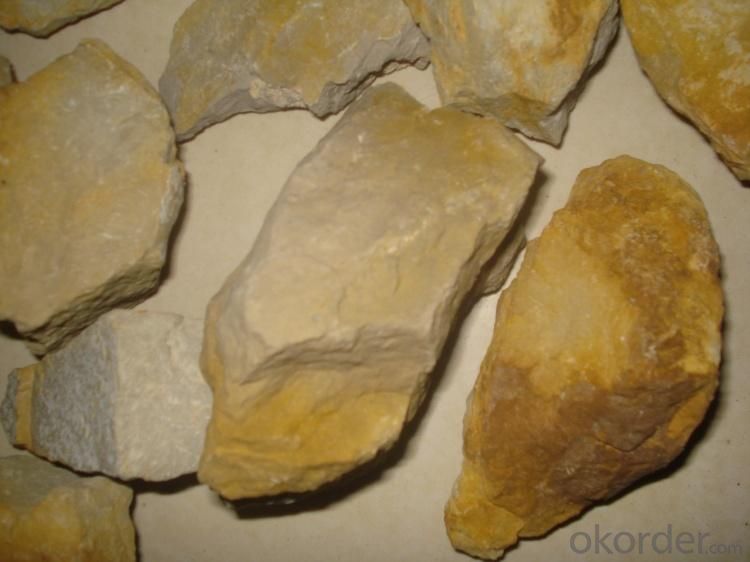
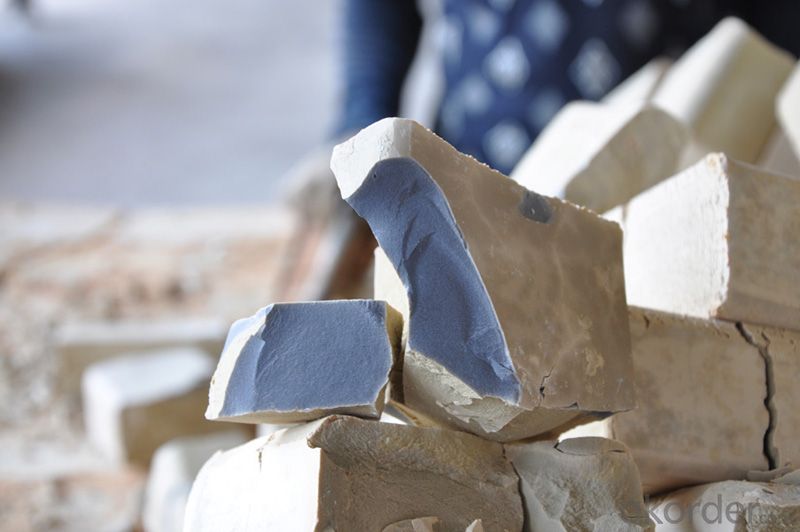
4. Calcined Bauxite Specification
ROTARY KILN BAUXITE
Al2O3 | Fe2O3 | SiO2 | TiO2 | K2O+Na2O | CaO+MgO | B.D (g/ccm) |
min | max | max | max | max | max | min |
88% | 1.8% | 6.5% | 4% | 0.25% | 0.5% | 3.25 |
87% | 2.0% | 7.0% | 4% | 0.25% | 0.5% | 3.15 |
86% | 2.0% | 7.0% | 4% | 0.25% | 0.5% | 3.15/3.10 |
85-80% | 2.0% | 10.0% | 4% | 0.30% | 0.5% | 3.10 |
ROUND KILN BAUXITE
Al2O3 | Fe2O3 | SiO2 | TiO2 | K2O+Na2O | CaO+MgO | B.D (g/ccm) |
min | max | max | max | max | max | min |
88% | 2.0% | 6.5% | 4% | 0.25% | 0.5% | 3.30 |
87% | 2.0% | 6.5% | 4% | 0.25% | 0.5% | 3.25 |
86% | 2.0% | 7.0% | 4% | 0.25% | 0.5% | 3.20 |
85% | 2.5% | 8.0% | 4% | 0.25% | 0.5% | 3.10/3.15 |
5.FAQ of Calcined Bauxite
1). Q: Are you a factory or trading company?
A: We are a factory.
2). Q: Where is your factory located? How can I visit there?
A: Our factory is located in ShanXi, HeNan, China. You are warmly welcomed to visit us!
3). Q: How can I get some samples?
A: Please connect me for samples
4). Q: Can the price be cheaper?
A: Of course, you will be offered a good discount for big amount.
Advantage:
1.High quality and competitive price.
2.Timely delivery.
3.If any item you like. Please contact us.
Your sincere inquiries are typically answered within 24 hours.
- Q: Does anyone know the difference between refractory and thermal insulation material?
- The main difference between insulation bricks and refractory bricks are as follows: 1. Insulation effect The heat conductivity cofficient of insulation bricks is usually 0.2-0.4 (average temperature of 350 ± 25 ℃) w / mk while the heat conductivity coefficient of refractory bricks is 1.0 (average temperature of 350 ± 25 ℃) w / mk or more. Thus it can be seen that the insulation effect of insulation bricks is much better than that of refractory bricks. 2. Refractoriness The refractoriness of insulation bricks is generally below 1,400 degrees centigrade while the refractoriness of refractory bricks is above 1,400 degrees centigrade. 3. Density Insulation bricks are generally light-weight insulation material, and the density is generally 0.8-1.0g / cm3. But the density of refractory bricks is above 2.0g / cm3.
- Q: The classification of fire-resistant material
- Refractory material cna be divided into common and special fire proofing material. Common fire proofing material can be sub-divided in to acid fire proofing material, neutral fire proofing material. and alkaline fire proofing material according to chemical properties. Special fire proofing material can be divided into high temperature oxide refractory, refractory compounds and high temperature composite materials according to the composition. In addition, it also can be divided into common refractory products (1580 ~ 1770 ℃), high-grade refractory products (1770 ~ 1770 ℃) and super refractory products (above 2000 ℃) according to the strength . According to the shape, it can be divided into block (standard brick, special-shaped brick, etc.), special shape (crucible, sagger, pipe, etc.), fibrous (aluminum silicate, zirconia and boron carbide, etc.) and irregular shape (refractory clay, refractory castable, ramming material and so on). According to sintering process, it can be divided into sintered product, fused cast product and melting jetting product.
- Q: Where is the sizing nozzle for refractories? Just enter the line, master into!
- This is the use of steel tapping water procedures inside!!
- Q: What are the features of construction class A fire resistant door ?
- 1, Save space and reduce cost. Feature of Nanjing Cathay Class A external wall thermal insulation materials : the thickness is between 60mm--180mm, so compared with the traditional block thickness, it saves architectural space greatly. At the same time, the weight is only 1/10 of that of the traditional wall, thus reducing coast in terms of architectural?structure. 2, Fireproof and green. Features of Nanjing Cathay class A fireproof external wall thermal insulation materials: fire endurance under high temperature of 1000℃ is 4 hours, and non-combustible performance can reach state A level, without any toxic gas in full compliance with international environmental standards. 3, Waterproof. Features of Nanjing Cathay Class A fireproof external wall thermal insulation materials: no slightest leakage when it is being used in containers for water without any waterproof finishing. It can be used in kitchens, bathrooms, basements and other wet areas. 4, Sound insulation. Features of Nanjing Cathay class A fireproof external wall thermal insulation materials: internal materials and EPS polystyrene foam granule have good properties of sound insulation and sound absorption. 90mm-thick wall can insulate 40dB sound, in line with national standard of sound insulation for residential building. 5, Thermal insulation. Features of Nanjing Cathay Class A fireproof external wall thermal insulation materials: main raw material is frezing resistant and thermal insulating material which is environmentally friendly and energy saving. With good effect of thermal insulation, it can keep indoor temperature at a constant level, so as to make the environment more comfortable.
- Q: What's the classification of refractory material?
- Magnesium aluminum is complex and mainly seeing what classification standard is like according to the appearance shape can be divided into two categories, setting and not setting according to the acid alkali can be divided into acidic, magnesia, high aluminum, ramming expected, spinel, spray coating, plastic, just the quality of the jade, daub material according to the chemical composition is divided into, such as clay, neutral and alkaline according to the operation mode can be divided into different castable, magnesium, calcium, magnesium chrome
- Q: how to classify Insulating Refractory ?
- Low-temperature thermal insulation materials (less than 600 degrees Celsius): medium temperature thermal insulation materials such as diatomaceous earth, asbestos tile (600-1200 degrees C): high temperature thermal insulation material vermiculite, light clay bricks(greater than 12,000 degrees Celsius): Lightweight corundum brick raw materials: Clay, high aluminua, silica, magnesia
- Q: What refractories can withstand high temperature above 2100 degrees?
- Well, what can you heat to 2100 degrees? ? The dryer? What you used are all substance of low-melting point, which cannot withstand even 1000 degrees. "Is the maximum temperature of refractory bricks 1500 degrees?" Do you mean refractoriness or operating temperature? Firstly, a dryer is impossible to reach 2100 degree. If it does, you might as well use high chrome brick for oxidizing atmosphere. You can use silicon?nitride brick for non-oxidizing atmosphere. But I guess it is enough for you to use clay brick, but the price differs a lot! ! !
- Q: What are the differences between thermal?insulation?material and refractory?
- Just as its name implies, Thermal insulation means that it doesn't conduct heat instead it insulates heat inside, while refractory means resistance to high temperature and it will not be out of shape or damaged due to high temperature.
- Q: Are refractory materials and fireproofing materials the same?
- The refractory material and fireproofing material are not the same in the strict sense. Refractories refer to non-metallic materials of which refractoriness are higher than 1580 degrees. Now commonly used heat insulation materials can also be considered as refractory materials. The fire endurance of fireproof materials reaches certain requirements. Its test temperature is 540 degrees. Range of applications for two material are not the same. Refractory materials can be used in high-temperature region as it can withstand high temperature. Fireproof materials can not be used under high temperatures for a long time.
- Q: what is steel fire door made of ?
- 1. fire resistance steel door has steel made door frames, door leaf framework and door panels. if the door leaf is filled with nontoxic fire insulation material, added with fireproof hardware accessories, which consists of a door that is fire resistance. 2. Category 1)safety facilities to prevent underground building from fire expansion and control volatilation. It is usually divided into steel and wooden fire door. 2) Class A fire doors, fire endurance of 1.5 hours; B fire doors, fire endurance of 1.0 hours; Class C fire doors, fire endurance of 0.5 hours. 3) In fact, there are many types of fire doors. For example, there are wooden made fire doors glass fire doors and steel fire doors based on different materials. access control fire doors, entrance fire resistance door, interior fire doors, explosionproof and fireproof door, quick-lock fireproof doors, quick opening door encountered with fire and multi-functional fire doors. 4) Based on the installation location: External fire doors and built-in fire doors. 5) divided by technology: Electronic fire doors.
Send your message to us
Raw Materials for Refractory:Popular in Poland Bauxite of CNBM in China
- Loading Port:
- Tianjin
- Payment Terms:
- TT OR LC
- Min Order Qty:
- 20000 m.t.
- Supply Capability:
- 10000000 m.t./month
OKorder Service Pledge
OKorder Financial Service
Similar products
Hot products
Hot Searches
